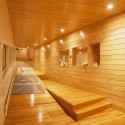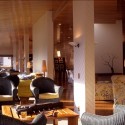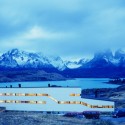the world's most visited architecture website
FeaturedBoandyne House / SVMSTUDIO
FeaturedVilla Monja / Enforma Studio

Editor's ChoiceAR Issues: A Primer From the Prince
Bhuwalka House / Khosla Associates

Architects: Khosla Associates
Location: Bengaluru, Karnataka, India
Principal Designers: Sandeep Khosla and Amaresh Anand
Design Team: Sandeep Khosla , Amaresh Anand , Akanksha Chajjer and Moiz Faizulla
Year: 2014
Photographs: Shamanth Patil J
Location: Bengaluru, Karnataka, India
Principal Designers: Sandeep Khosla and Amaresh Anand
Design Team: Sandeep Khosla , Amaresh Anand , Akanksha Chajjer and Moiz Faizulla
Year: 2014
Photographs: Shamanth Patil J

Call for Proposals: 2015 Deborah J. Norden Fund
In memory of architect and arts administrator Deborah Norden, the Deborah J. Norden Fund is calling for proposals from students and recent graduates in the fields of architecture, architectural history, and urban studies for awards up to $5000 in travel and study grants. A program of The Architectural League of New York, participants must submit a maximum three-page proposal, which succinctly describes the objectives of the grant request and how it will contribute to the applicant’s intellectual and creative development. The deadline for submissions is April 16, 2015. For more information, please visit here.
Fenwick Street House / Julie Firkin Architects

Architects: Julie Firkin Architects
Location: Clifton Hill VIC, Australia
Area: 105.0 sqm
Year: 2014
Photographs: Christine Francis
Location: Clifton Hill VIC, Australia
Area: 105.0 sqm
Year: 2014
Photographs: Christine Francis
Pei Cobb Freed Breaks Ground on Boston’s Tallest Residential Tower

Construction has commenced on Pei Cobb Freed & Partners’ 61-story condominium tower inBoston’s historic Back Bay. The $700 million development will be the tallest residential building in the city, and the tallest tower to rise since the 1976 John Hancock Tower, also designed by Pei Cobb Freed.
“The project allows us to consider once again how a tall building, together with the open space it frames, can respond creatively to the need for growth while showing appropriate respect for its historic urban setting,” says Henry Cobb of Pei Cobb Freed & Partners.
BLUEPRINT: Curated by Sebastiaan Bremer and Florian Idenburg & Jing Liu of SO – IL
BLUEPRINT is the latest exhibition on display at the Storefront for Art and Architecture in New York. Curated by Sebastiaan Bremer, Florian Idenburg and Jing Liu, the exhibition features 50 blueprints from participating artists and architects, ranging from as far back as 1961 to 2013.
In Progress: Bahá’í Temple of South America / Hariri Pontarini Architects

Architects: Hariri Pontarini Architects
Architect In Charge: Siamak Hariri – Hariri Pontarini Architects
Local Architect: BL Arquitectos
Client: National Spiritual Assembly of the Bahá’ís of Chile, National Spiritual Assembly of the Bahá’ís of Canada
General Contractor: Desarrollo y Construcción del Templo Bahá’í para Sudamérica Ltda.
Area: 1200.0 sqm
Year: 2016
Photographs: Courtesy of Bahá’í Temple of South America
Architect In Charge: Siamak Hariri – Hariri Pontarini Architects
Local Architect: BL Arquitectos
Client: National Spiritual Assembly of the Bahá’ís of Chile, National Spiritual Assembly of the Bahá’ís of Canada
General Contractor: Desarrollo y Construcción del Templo Bahá’í para Sudamérica Ltda.
Area: 1200.0 sqm
Year: 2016
Photographs: Courtesy of Bahá’í Temple of South America
Nearly four years after the start of its construction, South America’s first Bahá’í temple is beginning to take shape. Designed by Canadian firm Hariri Pontarini Architects, the temple is being constructed at the foothills of the Andes in Santiago, Chile. The building is comprised of “nine translucent wings, rising directly from the ground, and giving the impression of floating over a large reflecting water pool,” describes the project’s website. Each wing is designed like a leaf, with a steel “main stem” and “secondary veins of steel” supporting its cast glass exterior. During the day, the cast glass will filter sunlight into the temple, while at night the temple’s interior lighting will produce a soft glow on the outside.
The structure’s steel columns are now fully self-supported on its concrete foundation, and the steel frames and interior marble panels of each of the nine wings have been completed. In October, the project reached an important milestone as the installation of the cast glass cladding began on the outside of the wings.
Joseph Pschorr House / Kuehn Malvezzi
The Critics Speak: 6 Reasons why Hadid Shouldn’t Have Sued the New York Review of Books

Update: Last week, Hadid and the New York Review of Books agreed to a settlement agreement, with Hadid accepting the apology of the New York Review of Books and, in conjunction with the settlement, donating an undisclosed sum of money to a labor rights charity. You can read the full joint statement at the end of this article.
For those that follow the ins and outs of architectural criticism, it will have been hard to miss the news this week that Zaha Hadid is suing the New York Review of Books, claiming that the critical broadside launched by Martin Fuller against Hadid in his review of Rowan Moore’s book Why We Build was not only defamatory but also unrepresentative of the content of the book. Hadid’s lawyers demanded a retraction of the review, which they claimed had caused Hadid “severe emotional and physical distress.”
Hadid’s lawsuit did manage to elicit an apology from Filler, but probably not the one she was hoping for: Filler posted a retraction admitting that his review confused the number of deaths involved in all construction in Qatar in 2012-13 (almost 1,000) with the number of deaths on Hadid’s own Al Wakrah stadium (exactly zero). However, much of Filler’s comments criticizing Hadid’s cold attitude to conditions for immigrant workers in Qatar remain unaddressed.
Throughout the week, a number of other critics took this opportunity to pile more criticism on Hadid, unanimously agreeing that the lawsuit was a bad idea. Read on after the break to see the six reasons they gave explaining why.
Explora Hotel in Patagonia / Germán del Sol + José Cruz

Architects: Germán del Sol, José Cruz
Location: Magallanes y la Antártica Chilena Region, Chile
Structure: Fernando del Sol Ing. Asociados
Year: 1993
Photographs: Guy Wenborne
Location: Magallanes y la Antártica Chilena Region, Chile
Structure: Fernando del Sol Ing. Asociados
Year: 1993
Photographs: Guy Wenborne

Spotlight: Félix Candela
Mexican-Spanish architect Félix Candela (Jan 27, 1910-Dec 7, 1997) was known for redefining the role of the architect in relation to structural problems, and played a crucial role in the development of new structural forms of concrete. His famous experimentation with concrete gave rise to projects like the Los Manantiales restaurant in the Xochimilco area of Mexico City and the Cosmic Rays Pavilion for the National Autonomous University of Mexico.
Office for Architecture Studio and Coworking Space / As – Built

Architects: As – Built
Location: Rúa Pardo Baixo, 23, 15403 Ferrol, A Coruña, Spain
Design Team: Pablo Ríos, Moncho Rey
Area: 82.0 sqm
Year: 2014
Photographs: Moncho Rey
Location: Rúa Pardo Baixo, 23, 15403 Ferrol, A Coruña, Spain
Design Team: Pablo Ríos, Moncho Rey
Area: 82.0 sqm
Year: 2014
Photographs: Moncho Rey
Jaboticaba House / Raffo Arquitetura

Architects: Raffo Arquitetura
Location: Alphaville, Londrina – PR, Brazil
Architectural Design: Lucas Raffo
Area: 540.0 sqm
Year: 2012
Photographs: Fabio Pitrez
Location: Alphaville, Londrina – PR, Brazil
Architectural Design: Lucas Raffo
Area: 540.0 sqm
Year: 2012
Photographs: Fabio Pitrez
Paolo Venturella’s Molise Headquarters to Feature Rotating Parametric Pixels

Italian firm Paolo Venturella Architecture has been commissioned to design a proposal for theMolise Headquarters. The inventive structure uses existing contextual information, such as the grid of the city and an abandoned soccer field on which it sits, to drive its parametric design. The resulting building not only makes use of an otherwise forgotten plot of land, but fits precisely into the urban fabric of the existing city layout, using its grid to shape the building.

Robert A.M. Stern 2015 Travel Fellowship Applications Now Available
This week, Robert A.M. Stern Architects released applications for its third annual Travel Fellowship. The $10,000 grant is given to an architecture student in the penultimate year of their Master’s degree study. The recipient must be attending one of 18 U.S. and Canadian schools, and show “insight and interest in the profession and its future, as well as the ability to carry forth in-depth research.” The prize money will be used to support travel and research based on Robert A.M. Stern’s own philosophy of reinventing traditional architecture. Check your eligibility and apply for the RAMSA Travel Fellowship here!
Viennese Guest Room / heri&salli

Architects: heri&salli
Location: Vienna, Austria
Design Team: Wolfgang Novotny
Year: 2015
Photographs: Hans Schubert
Location: Vienna, Austria
Design Team: Wolfgang Novotny
Year: 2015
Photographs: Hans Schubert
Theatre Speelhuis / Cepezed Architects

Architects: Cepezed Architects
Location: Helmond, Netherlands
Area: 1997.0 sqm
Year: 2013
Photographs: Courtesy of Jannes Linders, Léon van Woerkom
Location: Helmond, Netherlands
Area: 1997.0 sqm
Year: 2013
Photographs: Courtesy of Jannes Linders, Léon van Woerkom












































No comments:
Post a Comment
Please leave a comment-- or suggestions, particularly of topics and places you'd like to see covered